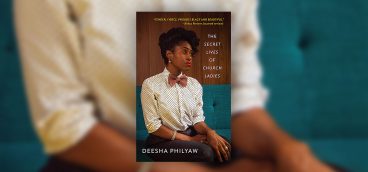Six Books for Your Winter Reading List

This issue, we take up half-a-dozen new books in three groupings: literary works from two creative writing teachers, Pittsburgh sports history from two prominent national writers, and the latest from two great local legal minds.
Don’t be surprised if that next national media story about the resurgent charms of Pittsburgh works in a reference to Clare Beams. “We Show What We Have Learned,” her debut collection of nine short stories, is assured, varied and old-fashioned in the best way—with the potential to capture the attention of the literary world. Look for an editor in New York media cabal central to say to the writer, “Get a quote from Clare Beams. If someone this talented moved to Pittsburgh in 2013, something must be going on there.”
Beams, who teaches at the Pittsburgh Center for the Arts and St. Vincent College, writes wellcrafted yarns that command your attention and don’t ask you to indulge her personal torment. Some are set in olden days or the recent past; others drift into the fantastical. The title story, for example, starts off with a fifth-grade class enduring Ms. Swenson, the odd teacher that everyone dreads. When parts of her body begin to drop to the floor, it comes across as an earned flight of fancy. “All the Keys to All the Doors” takes place in a small New England town supported by the generous philanthropy of one local rich woman. All of the buildings that she funds mysteriously clean themselves each night, leaving the caretakers with nothing to care for.
The collection is bookended by two masterful stories set in private schools. It opens with “Hourglass,” in which the Gilchrist School goes to extraordinary lengths to form the ideal Gilchrist girl, and closes with “The Renaissance Person Tournament,” my favorite and one that stays in the realm of reality. The Simmler School’s annual competition pits the three most accomplished students against each other in a show of learnedness, while teachers battle it out behind the scenes. It’s a tour de force of wit and wisdom, and leaves you eager to read more from Beams.
Most every adult can point to a pivotal year, a time passage through which you emerged as the person you are today. Marc Nieson had one. It was about 25 years ago, when he was a confused but impassioned creative type in his early 30s. Now he teaches writing at Chatham University. His memoir, “Schoolhouse,” is a textbook example of how to make your life story and family dramas intriguing to everyone else with relentless enthusiasm, curiosity and narrative drive.
Nieson spent his 20s bouncing around his native New York with stints in Venice, Italy, vaguely unsatisfied. The discipline of graduate school at the Iowa Writer’s Workshop seemed like the solution. He spent the first year in an Iowa City duplex apartment, living like a grad student, not setting the literary world on fire and still keeping the flame alive with his NYC lover nearly 20 years his senior. (Status: It’s complicated.) For the second year of studies, this urban guy who grew up in suburban Long Island opts for a living situation literally off the beaten path: a former one-room schoolhouse, tucked away on the large property of a elderly woman.
The isolation of the schoolhouse and the proximity to nature work a certain magic. Past and present interweave. In one of the best set pieces, he discovers a great horned owl, dead, on a back road. Fascinated, Nieson absconds with it, studies its biology and guts the owl— and flashes back to New York butcher shop of grandfather, a Jewish emigre from Poland, and the Hebrew prayer he would mumble (“I would later learn, for forgiveness”) every time he cut into meat.
Nieson is not a monk in this schoolhouse year. He meets Beth, a strong-willed dancer and choreographer, and the reader can see that they are going to make beautiful music together. Nieson opens the memoir by confessing that he’s always been a slow learner: “Stumbling toward hindsight, I’ve come to call it.” His patience is the reward of “Schoolhouse,” a zeroed-in look at a wideangle life.
The lowest form of journalist is the drive-by correspondent who drops into town, talks to a taxi driver and PR person, files and scrams. S.L. Price of Sports Illustrated is, by contrast, the highest form. He spent close to six years researching and writing this authoritative and compassionate work on Aliquippa, the former industrial powerhouse in Beaver County that epitomizes a struggling town—and that represents the glories of high school football in Western Pennsylvania. My Post-Gazette colleague Mike White, the dean of high school sportswriters, confirms Price’s legwork. “I kept seeing him at game after game over a bunch of years,” he said. “He’s got it down.”
While football brought Price to Aliquippa, “Playing Through the Whistle” is not a rahrah sports book. It is about the town’s history as a Jones & Laughlin steel mill community, where social engineering was practiced along with metallurgy. “The Family,” as the Jones management entity came to be known, wanted to make it “the best possible place for a steelworker to raise a family.” That early 20th-century paternalism meant security for workers, housing assigned by ethnicity and overwhelming control of the town by J&L.
High school football was the rallying point, and the Aliquippa Quips produced star players far beyond all reason, Mike Ditka among the many. (Musician Henry Mancini, too.) Industrial decline brought on social despair, and Price’s book is also a chronicle of crimes, murders, drug abuse and broken homes.
Yet a spirit holds on in Aliquippa. “The mill’s end cut the town’s legs off,” Price writes. “Quips football has propped it up ever since, each season’s wins and titles like the spidery tingling of a phantom limb, the vibration that almost, for small moments each autumn, feels like the thing that’s gone.”
Released in the fall, Michael MacCambridge’s comprehensive report on the life of the legendary Steelers coach should already be on the holiday shopping list of every 1970s Steelers dynasty fan (a demographic that transcends geography). In “Chuck Noll: His Life’s Work,” MacCambridge’s achievement is sustaining interest in a human being who was famously as stoic as a Sphinx.
If you have always been baffled by Noll’s taciturn style, this book will help you understand how it came to be. Noll was the youngest in a German Catholic family in Cleveland; his father fell ill with a neurological disease and became a silent presence in the house; Noll himself suffered from epilepsy, which nixed his career in Notre Dame football. Driven to succeed at sports, but curious about the life of the mind as well, Noll maintained a balance through his life. As for his reluctance to elate over victory, MacCambridge gets to the core: “I learned very early in my football career” that for him, “the doing is the pleasure, not the rejoicing therein.”
Noll has found a worthy counterpart in MacCambridge, an accomplished writer on football who is equally at home in cultural topics.
I hope that Dennis Unkovic raised a lot of money for whomever becomes president in January 2017. He would make a superb U.S. ambassador to any nation under the sun, as his wise ebook “Face: How Saving Face Changes Everything” proves.
An international lawyer with his heart in Pittsburgh, Unkovic (whom I’ve known for years) has spent a lifetime traveling the globe, most extensively in Asia. He has distilled those decades of experience into an appealing and practical guide to behaving harmoniously in any culture. It will be helpful in a tough negotiation with a Korean business group or a long dinner with Russian tycoons. It might even help at your spouse’s far-flung family reunion.
Unkovic presents 12 rules of conduct, from talking about food yet not religion, and giving proper gifts but not bad jokes. The most important rule is No. 9: “Stop, Look and Listen.” That means, “You focus your full attention on the other person and avoid injecting yourself and your ideas into a conversation before a relationship or at least some degree of camaraderie is established.” Why, oh why, do so many Americans abroad have trouble grasping that simple concept?
The idea of “saving face” is most associated with Asia, but the global-minded Unkovic shows how it cuts across all cultures: Treat others with respect and you can expect the same.
He also has some practical advice. If presented with an exotic but scary food item at a ceremonial meal, there are ways to avoid it politely. At a fine restaurant in Tokyo, he was served a warm drink containing two live eels. The eels, it was explained, “bite the lining of your stomach before they die. This is a unique form of sexual pleasure.” Unkovic just relaxed, chuckled and said as nicely as he could that “I really don’t want to drink this.” Lo and behold, the host replied, “Frankly, I don’t like this dish either,” and back it went. Face saved all around.
It is quite possible that you are sick of anything to do with the presidency, after enduring the campaign of 2016. But just as likely, you will need reason to restore faith in the grandeur of the office.
Ken Gormley, the new president of Duquesne University and the nationally recognized author of books on presidential history, has just the high-protein meal. As editor of “The Presidents and the Constitution: A Living History,” he has assembled essays on all 44 presidents by scholars who can write for a general audience. (Or, in the case of my newspaper’s boss David M. Shribman, general-audience writers who have the chops of a scholar. He provides everything you need to know about William Henry Harrison, who died in office in 1841 after serving 31 days.)
Gormley writes the chapter on Bill Clinton, along with the book’s introduction and conclusion. Which is: the U.S. Constitution “dedicates surprisingly little space to defining the duties or powers of the president; instead, it leaves the contours of that high office to be sketched out in real time.” Therefore, a “complete picture only comes to light by tying together threads that span across presidencies.” It’s a long winter; get cracking.





